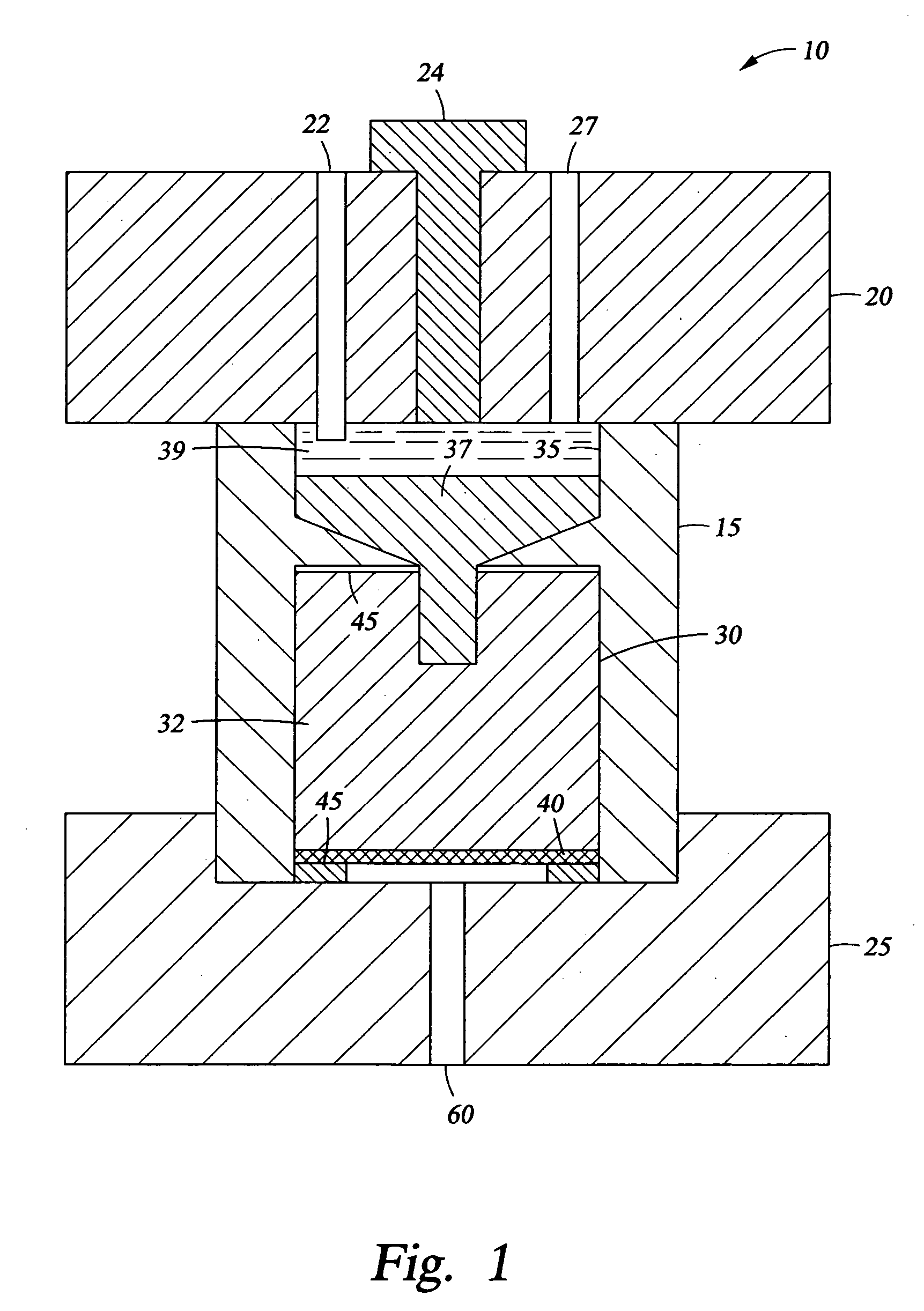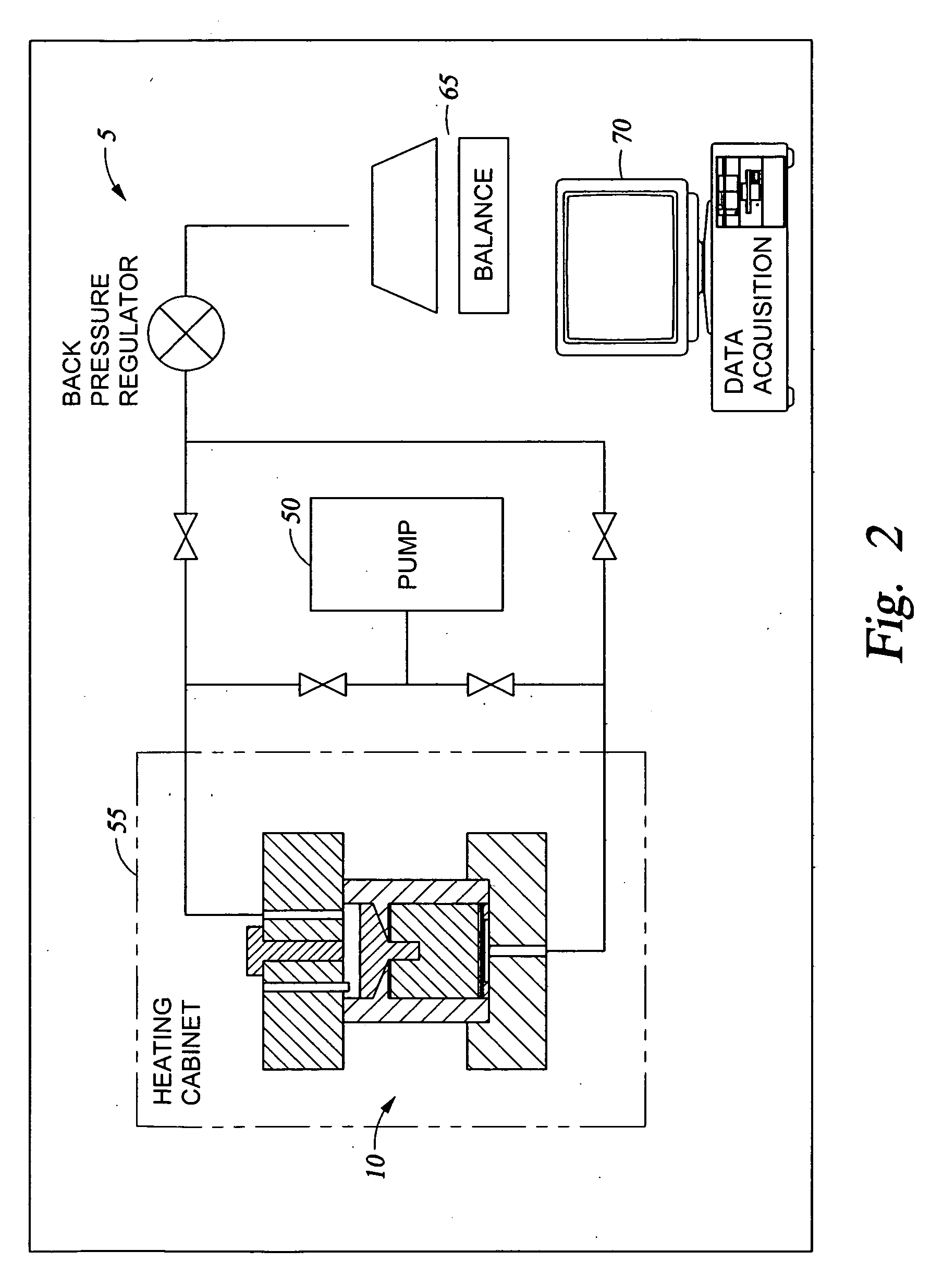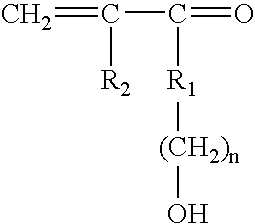Sealant composition comprising a gel system and a reduced amount of cement for a permeable zone downhole
a permeable zone and gel system technology, applied in the direction of sealing/packing, well accessories, chemistry apparatus and processes, etc., can solve the problems of insufficient mechanical properties to provide sufficient resistance to flow, cement does not penetrate into the porous, and many microchannels along the cement and porous rock interfa
- Summary
- Abstract
- Description
- Claims
- Application Information
AI Technical Summary
Problems solved by technology
Method used
Image
Examples
example 1
[0145] The fluid leak off properties were measured in a custom built system 5 as depicted in FIGS. 1 and 2. The stainless steel cell 10 has a body 15 disposed between an upper housing 20 and a lower housing 25. The upper housing has a temperature sensor 22, a fill port 24, and a pressure port 27. The body 15 has a central chamber 30 holding a sample of core sample 32 on top of a metal filter 40. The core sample 32 simulates the permeability of a downhole formation. Rubber seals 45 provide a seal between the core sample 32 and the upper housing 20 and lower housing 25. A fluid reservoir 35 containing a sealant composition 37 and a liquid 39 is disposed above the core sample 32. The sealant composition 37 is placed in the reservoir 35 via fill port 24, followed by the liquid 39. The liquid 39 is pressurized via pressure port 27 using pump 50, as shown in FIG. 2. The steel cell 10 may be place in a heating cabinet 55, and the combination of heat and pressure provided by heating cabinet...
example 2
[0148] Leakoff tests were performed at 120° F. using a Hassler sleeve apparatus containing a sandstone core. Brine containing 9% NaCl and 1% CaCl2 was first pumped through the core to determine the initial permeability. In a control test, a mixture of 5% polyacrylamide and 1.3% polyethylene imine in fresh water was next pumped into the core. Approximately 140 mL of this mixture was pumped through the core in 20 minutes at a differential pressure of 7 psi. This type of polymer solution offers essentially no resistance to flow through such cores. Thus, if the differential pressure had been increased, the same volume would have flowed through in a much shorter time period.
[0149] A second test utilized a mixture of 5% polyacrylamide and 1.3% polyethylene imine in fresh water, but also contained 50% by weight of 100 mesh sand. In this test a differential pressure of 1000 psi was applied, and only ˜11 mL of fluid leaked off through the core in 30 minutes. Thus, the inert filler greatly l...
PUM
 Login to View More
Login to View More Abstract
Description
Claims
Application Information
 Login to View More
Login to View More - R&D
- Intellectual Property
- Life Sciences
- Materials
- Tech Scout
- Unparalleled Data Quality
- Higher Quality Content
- 60% Fewer Hallucinations
Browse by: Latest US Patents, China's latest patents, Technical Efficacy Thesaurus, Application Domain, Technology Topic, Popular Technical Reports.
© 2025 PatSnap. All rights reserved.Legal|Privacy policy|Modern Slavery Act Transparency Statement|Sitemap|About US| Contact US: help@patsnap.com



